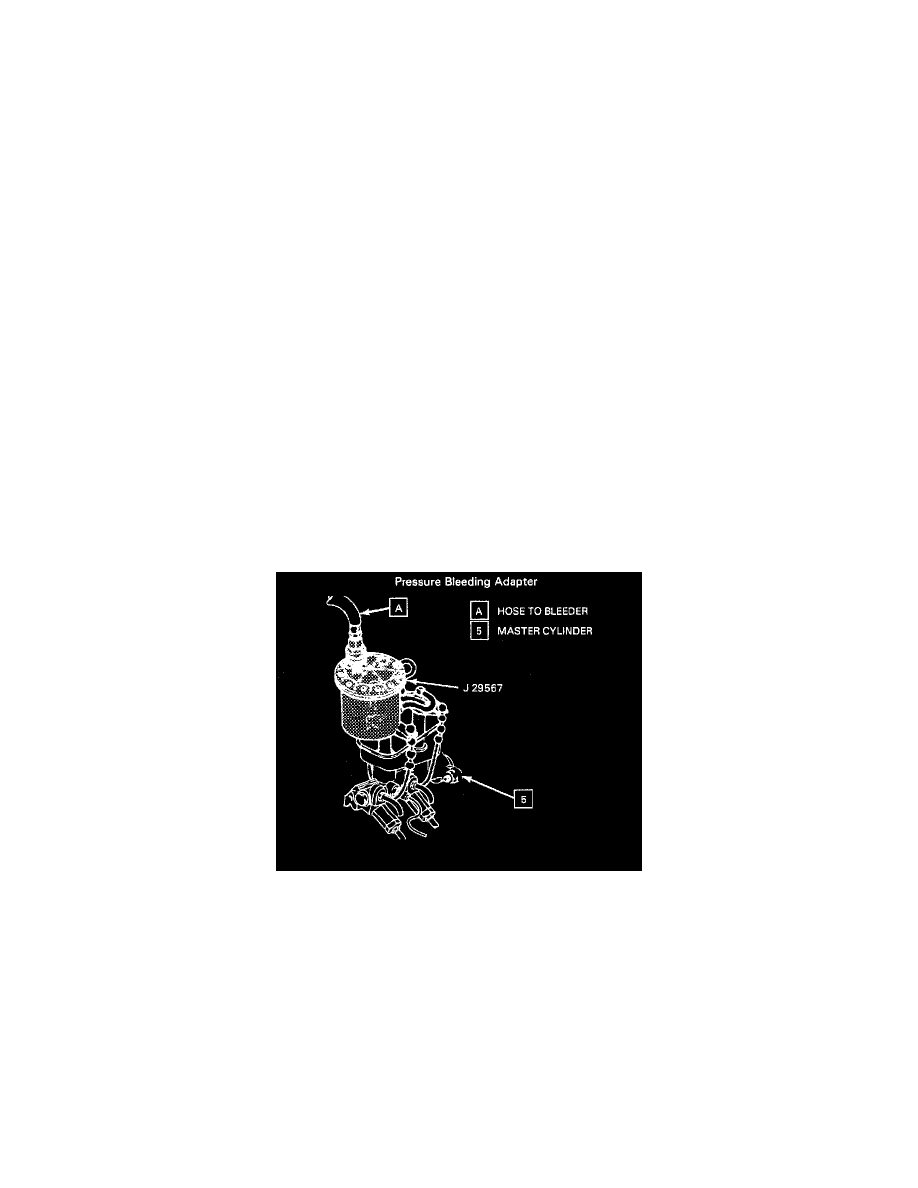Caprice RWD V8-305 5.0L (1992)

Brake Bleeding: Service and Repair
Pressure Bleeding Procedure
BLEEDING BRAKE HYDRAULIC SYSTEM
CAUTION: Do not move the vehicle until a firm brake pedal is obtained. Air in the brake system can cause loss of brakes and could result in
personal injury.
A bleeding operation is necessary to remove air from the hydraulic brake system whenever it is introduced into the hydraulic system.
It may be necessary to bleed the hydraulic system at all four brakes if air has been introduced through a low fluid level or by disconnecting brake pipes at
the master cylinder. If a brake pipe is disconnected at one wheel, then that wheel cylinder/caliper only needs to be bled. If pipes are disconnected at any
fitting located between master cylinder and brakes, then the brake system served by the disconnected pipe must be bled.
Pressure Bleeding
Tools Required:
J 29532 Diaphragm Type Brake Bleeder
J 29567 Brake Bleeder Adapter
J 21472 Brake Bleeder Wrench
J 35856 Proportioning Valve Depressor
NOTICE: The use of rubber hoses or parts other than those specified for the Antilock Brake System may lead to functional problems requiring major
overhaul. Replace all components included in repair kits used to service this system. Lubricate rubber parts with clean, fresh brake fluid to ease
assembly. Do not use lubricated shop air on brake parts as damage to rubber components may result. If any hydraulic component is removed or brake
line disconnected, it may be necessary to bleed all or part of the brake system. The torque values specified are for dry, unlubricated fasteners.
NOTICE: Pressure bleeding equipment must be the diaphragm type and must have a rubber diaphragm between the air supply and the brake fluid to
prevent air, moisture, oil and other contaminants from entering the hydraulic system.
1. Install J 29567 to the master cylinder (5).
2. Charge J 29532 to 140 - 172 kPa ( 20-25 psi ).
3. Connect line to adapter.
-
Open line valve and depress bleed-off valve on top of adapter until a few drops of fluid appear.
4. Raise and suitably support the vehicle.
5. A manual override is required with rear drum brakes to permit fluid flow to the front wheels when pressure bleeding. Using J 35856 to hold the
valve stem of combination valve open during pressure bleeding.
6. Bleed the brakes in the following sequence:
-
Right rear.
-
Left rear.
-
Right front.
-
Left front.
